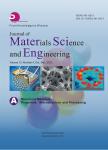Prediction of Salt Tolerance in Rice (Oryza Sativa) Based on Shoot Ion Content under Non-Stressed Conditions
Prediction of Salt Tolerance in Rice (Oryza Sativa) Based on Shoot Ion Content under Non-Stressed Conditions作者机构:Plant Breeding and Genetics Laboratory (PBGL) Joint FAO/IAEA Division of Nuclear Techniques in Food and Agriculture IAEA Laboratories Seibersdorf International Atomic Energy Agency PO Box 100 Wagramerstrasse 5 A-1400 Vienna Austria Current address: BioHybrids International Ltd P.O. Box 2411 Earley Reading RG6 5FY United Kingdom Physics Chemistry and Instrumentation Laboratory IAEA Laboratories Seibersdorf International Atomic Energy Agency POBox 100 Wagramerstrasse 5 A-1400 Vienna Austria Soil and Water Management and Crop Nutrition Laboratory (SWMCNL) Joint FAO/IAEA Division of Nuclear Techniques inFood and Agriculture IAEA Laboratories Seibersdorf International Atomic Energy Agency PO Box 100 Wagramerstrasse 5A-1400 Vienna Austria Institut Ruder Boskovic Bijenicka cesta 54 10000 Zagreb Croatia Plant Biotechnology Unit Department of Biotechnology University of Natural Resources and Applied Life Sciences Muthgasse 18 A-1190 Vienna Austria
出 版 物:《材料科学与工程(中英文A版)》 (Journal of Materials Science and Engineering A)
年 卷 期:2016年第6卷第1期
页 面:1-16页
学科分类:09[农学] 090101[农学-作物栽培学与耕作学] 0901[农学-作物学]
主 题:水稻基因型 耐盐性 Oryza 离子含量 应激 非遗传因素 多变量统计分析 元素含量
摘 要:Salt is a major abiotic stress threatening crop plants such as rice. Tolerance to salt is complex and regulated by numerous genetic and non-genetic factors. To date most screens for salt tolerance rely on plant performance in stressed conditions. This article describes the ability to screen for salt tolerance in non-stressed conditions. The work is based on correlations between 62 rice genotypes in salt stress and non-stress conditions and measuring the intake of elements using Particle Induced X-ray Emission and X-ray Fluorescence. Roots and shoots were analysed though shoots provided easier and more robust materials to work with. Data were interpreted using multivariate statistical analysis which showed the intake ratio of elements across tolerant, moderately tolerant and susceptible rice genotypes. Tolerant genotypes exhibited a larger intake of elements, and a classification criteria based on Canonical Discriminant Analysis allowed differentiation of salt tolerant genotypes not only under salt stress but, significantly, also under non-stressed conditions. Thus, shoot element content in benign conditions can be used as an indicator for salt tolerance. These studies suggest that many salt tolerance mechanisms in rice cultivars are constitutive, they are not switched on by stress, and this has implications for physiological and genetic studies, especially in crop plants. The approach has practical application as it allows pre-screening in non-stressed conditions, from which candidate salt tolerant genotypes may be selected for subsequent testing in saline field conditions, selecting in benign conditions provides greater seed harvest of the next generation which can be used in multiple tests.



